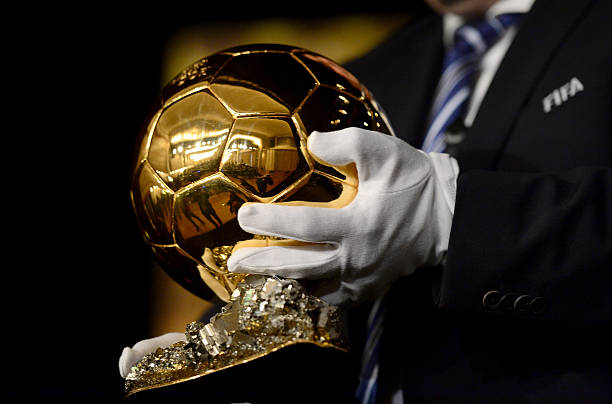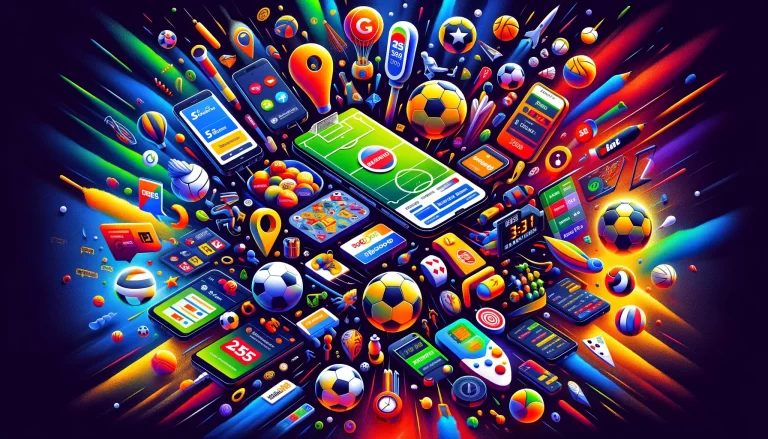All About the FIFA Ballon d'Or
The Ballon d'Or journey FIFA begins in post-war Europe, a time when the continent sought unity and celebration through sport. Initially intended for European players, the Ballon d'Or quickly became a global phenomenon.
In 1995, the inclusion of players from clubs outside Europe expanded its reach, making the competition truly global. The temporary merger with the FIFA award between 2010 and 2015 only reinforced its status as the pinnacle of individual football achievement.
When we talk about football, some images immediately come to mind: spectacular goals, passionate fans, and of course, the glorious Ballon d'Or. This award, coveted by players around the world, is not just a trophy; It is a symbol of excellence and achievement in the world of football.
Browse the content

Voting and Selection Criteria: How to Win the FIFA Ballon d'Or
You may wonder: how does a player win the Ballon d'Or? Well, it's not easy at all. The selection involves a meticulous voting process where sports journalists from around the world submit their votes, choosing three players who, in their opinion, are the best.
were the best of the year. Each vote is weighted, with points awarded according to ranking, and the player with the highest total score takes home the FIFA Ballon d'Or.
Notable Winners and Records: The FIFA Ballon d'Or Giants
The history of the Ballon d'Or is full of legendary names. From Alfredo Di Stéfano to Johan Cruyff, from Michel Platini to Cristiano Ronaldo and Lionel Messi, the winners represent a who's who of world football. Lionel Messi, with seven wins, holds the record for most Ballon d'Ors won, a testament to his genius and lasting influence on the sport.
ICultural and Economic Impact: The Power of the FIFA Ballon d’Or
The impact of the Ballon d'Or goes far beyond the football field. Winning this award can completely transform a player's career. Winners often experience a significant increase in their market value.
with clubs willing to pay high premiums to secure the services of a “Best in the World”. Furthermore, sponsors and brands rush to associate their names with the Ballon d'Or holders, hoping to capitalize on their popularity and image of excellence.
Culturally, the Ballon d'Or has an equally monumental role. It celebrates and promotes individual talent within a team sport, often creating global heroes whose fame transcends football.
These players become cultural icons, influencing fashion, music and even politics. The award also reflects and sometimes influences tactical and technical trends in football, with coaches seeking to shape their strategies to maximize the potential of future FIFA Ballon d'Or candidates.
Women's Category: Equality in the FIFA Ballon d'Or
One of the most significant recent developments in the history of the Ballon d'Or was the introduction of the women's category in 2018. This change was a crucial step towards recognizing and valuing talent in women's football.
Players like Ada Hegerberg, Megan Rapinoe and Alexia Putellas have not only won the Ballon d'Or, but have also used the platform to advocate for gender equality and better conditions in women's sport. This award has brought unprecedented visibility to women's football, inspiring a new generation of girls to play and follow their passions.
ICultural and Economic Impact: The Power of the FIFA Ballon d’Or
The impact of the FIFA Ballon d'Or goes far beyond the football field. Winning this award can completely transform a player's career. Winners often experience a significant increase in their market value.
with clubs willing to pay high premiums to secure the services of a “Best in the World”. Furthermore, sponsors and brands rush to associate their names with the FIFA Ballon d'Or holders, hoping to capitalize on their popularity and image of excellence.
Culturally, the FIFA Ballon d'Or has an equally monumental role. It celebrates and promotes individual talent within a team sport, often creating global heroes whose fame transcends football. These players become cultural icons.
influencing fashion, music and even politics. The award also reflects and sometimes influences tactical and technical trends in football, with coaches seeking to shape their strategies to maximize the potential of future FIFA Ballon d'Or candidates.
Women's Category: Equality in the FIFA Ballon d'Or
One of the most significant recent developments in the history of the FIFA Ballon d'Or was the introduction of the women's category in 2018. This change was a crucial step towards recognizing and valuing talent in women's football.
Players like Ada Hegerberg, Megan Rapinoe and Alexia Putellas have not only won the FIFA Ballon d'Or, but have also used the platform to advocate for gender equality and better conditions in women's sport. This award has brought unprecedented visibility to women's football, inspiring a new generation of girls to play and follow their passions.
Conclusion
The FIFA Ballon d'Or is more than just an award; It is an institution that has shaped the face of world football. As we move forward, its continued relevance will depend on its ability to adapt and respond to changes in sport and society. The legacy of the FIFA Ballon d'Or is indisputable, but its future will be determined by how it faces challenges and maintains its position as football's most prestigious award.







